#payload capacity
Explore tagged Tumblr posts
Link
Stellantis has introduced its innovative STLA Frame platform, designed to power the next generation of full-size, body-on-frame trucks and SUVs. The versatile platform supports a range of propulsion systems, including
#STLA Frame#Stellantis platform#multi-energy platform#electric trucks#electric SUVs#BEV#REEV#towing capacity#payload capacity#electric vehicle platform
0 notes
Text

Tata Ultra T6: Efficient, Reliable, and Powerful Light Commercial Truck
The Tata Ultra T6 offers exceptional performance with a robust design, ideal for both urban and intercity transport. Built with advanced technology, it combines high payload capacity with excellent fuel efficiency, making it a reliable choice for businesses. With a strong chassis, spacious cargo space, and driver-friendly features, it ensures long-term productivity and operational cost savings.
#Tata Ultra T6#light commercial truck#performance truck#urban transport#payload capacity#fuel efficiency
0 notes
Link
The article "Convair B-58 Hustler — The Strategic Bomber Built to End the World" by Will Dabbs, MD, published in "The Armory Life," discusses the history and technical characteristics of the Convair B-58 Hustler, a Cold War-era strategic bomber designed for high-altitude, high-speed missions. Initially intended to perform a singular mission focused on nuclear delivery, the B-58 was engineered for speed and operated at Mach 2 and 70,000 feet. Despite its advanced design, including features like a delta wing and the use of four General Electric J79 engines, the aircraft faced limitations, such as vulnerability to surface-to-air missiles and challenging flight characteristics. The article details several engineering challenges, such as crew safety at high speeds, and mentions its operational history, highlighting it was never used in combat and was phased out due to the evolving nature of aerial threats. The piece emphasizes the B-58's role in America's nuclear triad and its iconic status as a technological marvel of its time.
#Convair B-58 Hustler#strategic bomber#supersonic speed#Cold War era#United States Air Force#delta wing design#nuclear deterrence#Mach 2 performance#General Electric J79 engines#defensive systems#aerodynamic advancements#operational history#reconnaissance missions#1950s military aviation#technological innovation#crew training#high-altitude flight#Soviet Union#national security#engineering challenges#air-to-air refueling#payload capacity#bomb delivery systems#mid-20th century aviation#aerospace engineering.
0 notes
Text
2024 Chevrolet Silverado 2500 HD - TDP Review
#2024 Silverado#2024 truck#advanced technology#Allison transmission#Australia#camera system#Chevrolet#Chevrolet truck#Chevy truck#diesel engine#Duramax V8#Ford F-250#Four-Wheel Drive#four-wheel drive truck#GMC Sierra 2500#heavy-duty performance#heavy-duty truck#infotainment system#interior comfort#off-road#Off-Road Capabilities#payload#payload capacity#powertrain#RAM 2500#Silverado 2500 HD#Silverado HD#Silverado interior#Silverado payload#Silverado review
0 notes
Text
Is The 2019 GMC Sierra 3500HD Denali Dually 6.6L Duramax Diesel Right For You?
If you are looking for a heavy-duty truck that can handle any job, you might want to consider the 2019 GMC Sierra 3500HD Denali Dually 6.6L Duramax Diesel. This truck is not only powerful and capable but also luxurious and comfortable. It has a stunning exterior design, a spacious and refined interior, and a host of advanced features and technologies. But is this truck right for you? In this…

View On WordPress
#10 quarts#6.6L Duramax#advanced features#amount of oil#capable#comfortable#correct type#diesel engine#high price tag#high towing capacity#interior#loud wind noise#luxurious#oil capacity#oil change#payload capacity#poor fuel economy#powerful#premium Bose sound system#refined cabin#road noise#significant amount of oil#spacious#stunning exterior design#technologies
0 notes
Text
i just invented 10,000 nuclear bombs that never stop exploding and when the explosion radius gets to its biggest point it stays that big and violent for the rest of time. the bombs are the size of a car.
i also just invented an airplane with completely normal control layouts, but every surface surrounding the control panel is covered in hundreds of hatch release levers for dropping payloads. they are all labeled as having different functions.
i also just started an international air mail delivery service with the aim to service the most land area from the sky, which is why prioritizing hatch release levers was so critical (to make sure we dont have to stop flying to drop the mail).
i also just employed 10,000 people from the dyslexic pilot convention to man our fleet of 10,000 hatch release lever planes and we plan to start making deliveries tonight. with an internal storage capacity of 1 large sedan, theres plenty of space for plenty of mail.
i do not remember where i put my 10,000 infinite atom bombs. i remember i had enough space in my hangar for 10,000 hatch release lever planes, or 10,000 infinite atom bombs, but not both side by side. i dont remember how i saved so much space.
4K notes
·
View notes
Text
The thing about massive trucks...
While there are certainly folks who want the biggest trucks possible, there are a lot of people who end up with larger trucks because that's what they're forced to buy since automakers keep making them bigger and bigger.
Like a lot of folks WANT smaller trucks. The introduction of the Ford Maverick with the 2022 model year has proven the market is hungry for small trucks (the less popular Hyundai Santa Cruz shows this too -- but the Maverick is way more popular).

For the first couple of years to even get one often meant waiting months if not over a year to get it. Ford could literally not build them fast enough to meet demand.
Because folks wanted a small truck, and could finally buy one.
Yet only Ford and Hyundai are in this market right now. Which is nuts.
(Also I drive a Maverick and get like 42 mpg and has a payload capacity of over 1400 lbs -- if you're not towing, I have no idea why you're buying something larger)
2K notes
·
View notes
Text
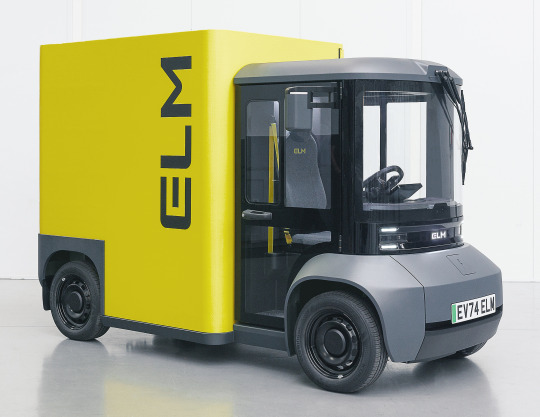
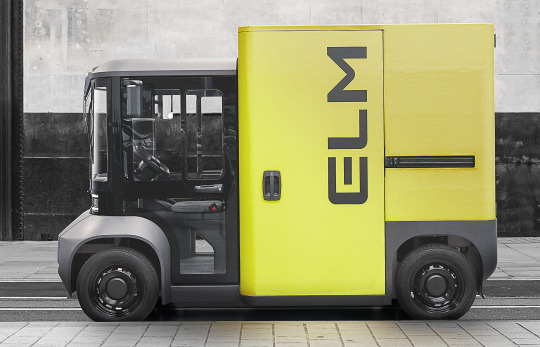

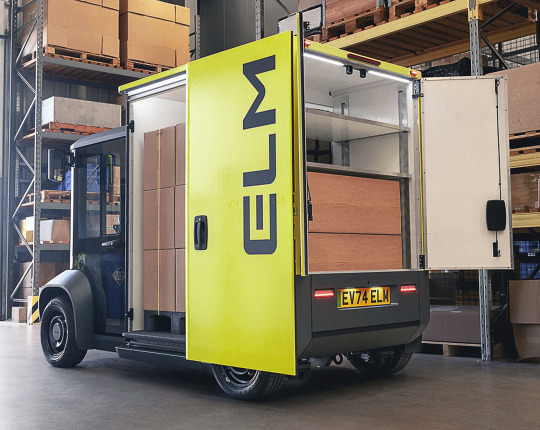
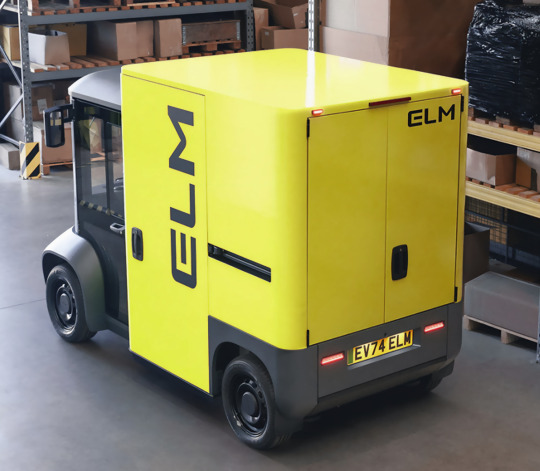
ELM Evolv demonstrator, 2024. Prodrive Advanced Technology and Astheimer Design have revealed a ‘last mile’ L7e category electric quadricycle prototype with a cubic load capacity rivalling mid-size vans. At 3,240mm long, 1,450mm wide, 2,150mm high and weighing 850kg with batteries, the compact Evolv can accommodates a 1.6m tall Euro pallet with a 300kg payload in the main load area. The secondary load area, accessible through rear ‘barn doors’, provides additional space for a 1.2m tall Euro pallet and 200kg payload. Prodrive and Astheimer has established a new company, ELM Mobility, to take the project into the production readiness phase. The vehicle, which has a 20kWh battery, will offer a 100 mile range with sales starting in 2028 at a target price of around £25,000.
ELM Mobility
#ELM#ELM Mobility#ELM Evolv#prototype#demonstrator#test vehicle#Prodrive#Prodrive Advanced Technology#Astheimer Design#2024#2028#electric quadricycle#small van#electric van#last mile delivery#micro van#box van#Evolv
152 notes
·
View notes
Text

Japan's most advanced fighter jet is the F-2, which is a variant of the F-16 Fighting Falcon produced by Lockheed Martin. The F-2 is a multirole fighter jet designed for air-to-air combat, air-to-ground strikes, and reconnaissance missions. It is operated by the Japanese Air Self-Defense Force (JASDF) and has been in service since 1995.
The F-2 is equipped with advanced avionics, including a radar system, a helmet-mounted display, and a digital cockpit display. It also has a range of sensors and sensors, including infrared and radar-guided missiles, as well as precision-guided munitions.
The F-2 has undergone several upgrades and modernizations over the years, including the installation of new engines, avionics, and electronic warfare systems. The latest upgrade, known as the "F-2A," was introduced in 2019 and includes advanced radar systems, improved sensors, and enhanced electronic warfare capabilities.
In addition to the F-2, Japan is also developing its own fifth-generation fighter jet, the F-X. The F-X is designed to replace the F-2 in the future and is expected to have advanced stealth capabilities, improved sensors, and enhanced electronic warfare capabilities. The F-X is expected to enter service in the mid-2020s.
Here are some key specifications of the F-2:
Length: 16.4 meters (53.8 feet)
Wingspan: 11.7 meters (38.4 feet)
Height: 4.7 meters (15.4 feet)
Maximum speed: Mach 2.0 (around 1,500 km/h or 932 mph)
Range: 1,800 kilometers (1,118 miles)
Payload capacity: 4 tons
Radar system: AN/APG-68(V)9
Engine: General Electric F110-GE-129
85 notes
·
View notes
Note
hi! your writing on aerospace and venture capital was very interesting, thank you for putting it out there! i'm curious how spacex plays into the dichotomy of private firms rejecting integration testing and subsequently wasting more money than if one followed the proper procedures, since i've heard that the company has a substantial market share / is developing unique and relevant technology while leaning into the same "move fast and break things" approach. is it just... subsidized / popular enough to absorb the losses?
tldr: spacex has a combination of factors working for it, but the only reason they can tank the losses is because they're very good at operating a hype machine
they weren't always this insane. in 2009 spacex was moving at a pretty fast pace for aerospace relative to other companies, but it was quite measured compared to their current state. falcon 1 was an incredibly simple rocket, basically just a technology demonstrator. even then, they were 1 failure away from bankruptcy before they finally got a success. this is commonly told as an underdog success story but somehow it does not inspire as much confidence in me as you'd think :p
when they started making falcon 9 it was, once again, an extremely simple rocket. sure, they had big plans for it, but falcon 9 v1.0 was built on extremely dependable, well known technology. they hired good engineers, took their time with development, and used reliable, existing tech. from then on, they just built on it very slowly. they changed one thing at a time.
the real thing that lead to their success at the time is that none of the things they were developing interfered with the core capability of the rocket. like, none of their customers were relying on the fact that they wanted to land the rocket on a boat. it's going to crash in the ocean anyways. might as well do landing attempts. the cost for failure there was basically nothing. falcon 9 succeeded so incredibly because they built a decent regular rocket, added features onto it, and got their testing for free-ish from launches they were doing anyways.
the current era of spacex dawned when elon musk realized that he could run a business on hype alone. slowly but surely, he started promising more. way more than his company could deliver. they could sell absolutely insane amounts of total horseshit based on spacex's reputation alone. they built falcon 9, after all. that means they can build anything!
and sell it did! remember when starship was called the Big Fucking Rocket, and was supposed to be a 100m tall composite hulled structure capable of putting 300 tons into orbit? remember how it was supposed to be bringing people to mars in 2022? remember how none of that happened and everyone just forgot? that shit! that's how spacex has operated post 2017
that whole strategy is to drum up hype with obviously impossible promises and get all the redditor temporarily embarrassed billionaire types on board by being super memey about it. and it worked! by 2020 their valuation was exploding (much like starship teehee) and it has not slowed down since

^^^ this is what selling piles of hot bullshit did for spacex. and if anyone says starlink fuck you starlink just barely broke even last year and only thanks to the US military.
and when i say it's bullshit i mean it's bullshit. if you trust elon musk's twitter as a primary source (most spacex fans and investors do), starship's planned payload capacity fluctuates by like. 3x depending on how many times he's texted his ex wives that morning. they miss scheduled deadlines for test flights and static fires so often that people joke about them being scheduled on "elon time" and somehow don't realize that this is a bad thing. every time a starship explodes it's lauded as some great achievement because if they ever admit failure, the hype will die out.
they're not just doing agile to rockets! this isn't changing requirements as new information becomes available. this is changing requirements whenever the billionaire dipshit feels like it! the poor engineers working for spacex are working insane crunch schedules just to keep the hype train moving. they need to constantly crank out impressive looking results to keep investors excited, even if they're not actually moving towards a goal. i've heard so many stories from spacex employees that they find out about changes to starship design requirements or test times from elon's twitter. it's fucking insane.
and spacex never stopped improving falcon 9! it kept being a pretty good rocket. they made incremental improvements to payload capacity and reusability. dragon became the workhorse of the US's transportation to the international space station. but that's not what they make the news for. that's not what they got their TWO HUNDRED AND TEN BILLION DOLLAR VALUATION for. no. they got that for making promises they can't keep.
this rant doesn't even touch on COTS/commercial crew. if i did it would end up being about five times longer. god help us all.
31 notes
·
View notes
Text

8 Different Types of Helicopters and Their Uses
1. Single Rotor Helicopter:
A single-rotor helicopter has one main rotor for lift and thrust and a smaller tail rotor for counteracting torque. It is the most common design, known for simplicity and efficiency in most flight conditions. Examples include the Bell 206 and Robinson R44.
2. Tandem Rotor Helicopter:
Tandem rotor helicopters have two main rotors mounted at opposite fuselage ends, rotating in opposite directions to counteract torque. This design allows for a higher payload capacity. Examples include the CH-47 Chinook.
3. Coaxial Helicopter:
Coaxial helicopters have two main rotors mounted on the same axis but rotating in opposite directions. This eliminates the need for a tail rotor and improves stability, efficiency, and maneuverability. The Kamov Ka-52 is a well-known example.
4. Compound Helicopter:
Compound helicopters combine rotor systems with other propulsion methods, such as fixed wings or auxiliary propellers, to improve speed and efficiency. Examples include the Sikorsky X2 and Eurocopter X3.
5. Tilt Rotor Helicopter:
Tiltrotor aircraft can transition between vertical lift (like a helicopter) and forward flight (like an airplane) by tilting their rotors. They are faster and more versatile. The V-22 Osprey is a prominent example.
6. Intermeshing Rotor Helicopter:
These helicopters have two rotors that intermesh at an angle, eliminating the need for a tail rotor and providing excellent lift. The Kaman K-MAX is a key example.
7. Electric Helicopter:
Electric helicopters use electric motors powered by batteries, offering quieter operation and zero emissions. They are typically used for training or short-distance transport.
8. Military Attack Helicopter:
Designed for combat, these helicopters are heavily armed with missiles, rockets, and guns. They excel in ground attack and support roles. The AH-64 Apache is a leading example.
#helicopter#navy#air force#army#world war ii#aviacion#automotive#automobile#electric vehicles#aircraft#globe#steps
29 notes
·
View notes
Text
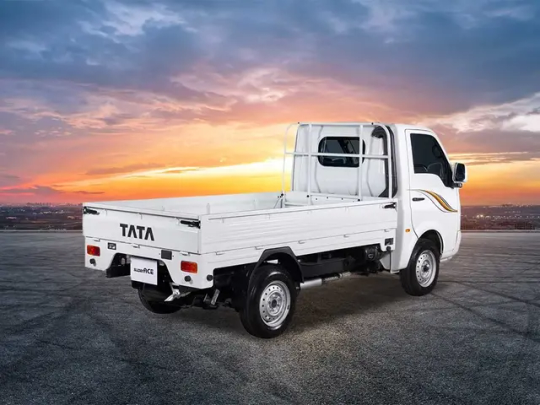
Tata Super Ace - Versatile and Efficient Small Commercial Vehicle in Thailand
Discover the Tata Super Ace, the ultimate small commercial vehicle designed for efficiency and versatility. Perfect for businesses in Thailand, the Super Ace offers a robust engine, large payload capacity, and exceptional fuel efficiency. Ideal for urban deliveries and commercial transport.
#Tata Super Ace#small commercial vehicle#fuel efficiency#payload capacity#urban delivery#Tata Motors Thailand
0 notes
Text
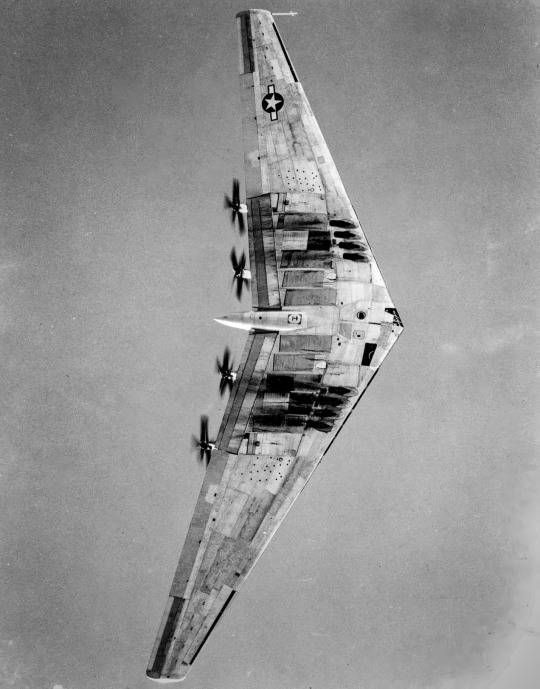
Northrop XB-35 Flying Wing prototype unique design using flying wing configuration. This innovative aircraft aimed to improve aerodynamic efficiency and payload capacity. Only prototypes and pre-production aircraft were built. further development design as YB-49 jet bomber.
@CcibChris via X
52 notes
·
View notes
Text

This kei truck shit is so annoying. Now do payload capacity of those beds, let alone towing capacity, range, number of occupants, etc
249 notes
·
View notes
Text
Antonov An-225: The Biggest Airplane in the World
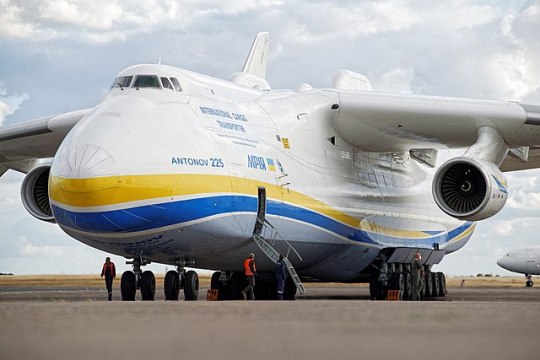
When it comes to airline airplane models, there's one that towers above the rest—quite literally. The Antonov An-225, known affectionately as "Mriya" (which means "Dream" in Ukrainian), holds the title of the biggest airplane in the world. This massive aircraft is not just a large airplane model in the figurative sense; it's the largest in every conceivable dimension.
The Antonov An-225 was originally designed in the 1980s to transport the Buran spaceplane, the Soviet Union's answer to NASA's Space Shuttle. But its capabilities far exceeded its original mission.
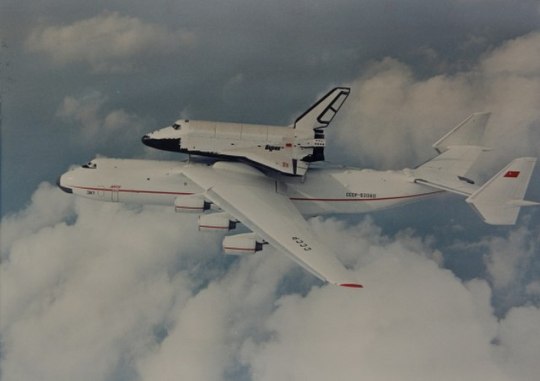
With its maiden flight in December 1988, the An-225 quickly became a symbol of Soviet engineering prowess, and later, an indispensable asset in global heavy-lift cargo transportation.
So, what makes the Antonov An-225 the biggest airplane in the world? Let’s delve into the details.
A Giant Among Giants
The sheer size of the Antonov An-225 is mind-boggling. This large airplane model has a measure of 84 meters (275 feet) in length, with wingspan size of 88.4 meters (290 feet). To put that into perspective, it's longer than an American football field and has a wingspan wider than a Boeing 747. The An-225 stands at 18.1 meters (59.3 feet) tall, nearly as tall as a six-story building.

This airline airplane model is equipped with six turbofan engines, each capable of producing 51,600 pounds of thrust. These engines, combined with its enormous wings, allow the An-225 to carry a maximum takeoff weight of 640,000 kg (1,410,958 pounds). This includes the cargo it carries, which can be up to 250,000 kg (550,000 pounds). This impressive lifting capability makes it the go-to choice for transporting oversized cargo, such as wind turbine blades, military tanks, and even other aircraft.
The Unique Capabilities of the An-225
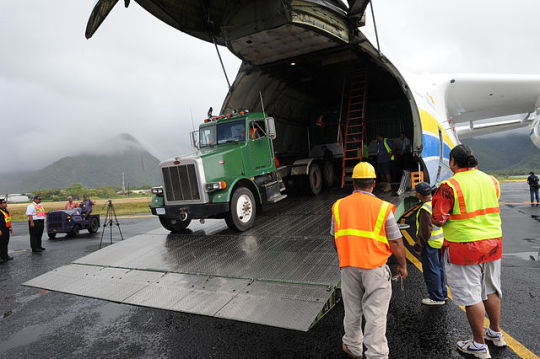
The Antonov An-225's cargo bay is so large that it could fit 50 cars. The interior is 43.32 meters (142 feet) long, 6.4 meters (21 feet) wide, and 4.4 meters (14.5 feet) high, making it spacious enough to accommodate a wide range of oversized items. Unlike many other cargo aircraft, which load through a rear cargo door, the An-225 is loaded through the nose. The aircraft's nose lifts up, allowing direct access to the cavernous interior. This feature is crucial for loading extremely large and heavy objects that cannot be easily maneuvered.
Another notable feature of this large airplane model is its 32-wheel landing gear system. This complex system allows the An-225 to land on runways that would be unsuitable for other aircraft of its size, providing flexibility in the types of airports it can access.
The An-225 also has a range of 15,400 km (9,569 miles) when carrying a smaller load, but this decreases as the payload increases. Despite this, its range and payload capacity make it ideal for long-distance heavy-lift missions, and it remains a vital tool in global logistics.
A Record-Breaking Aircraft
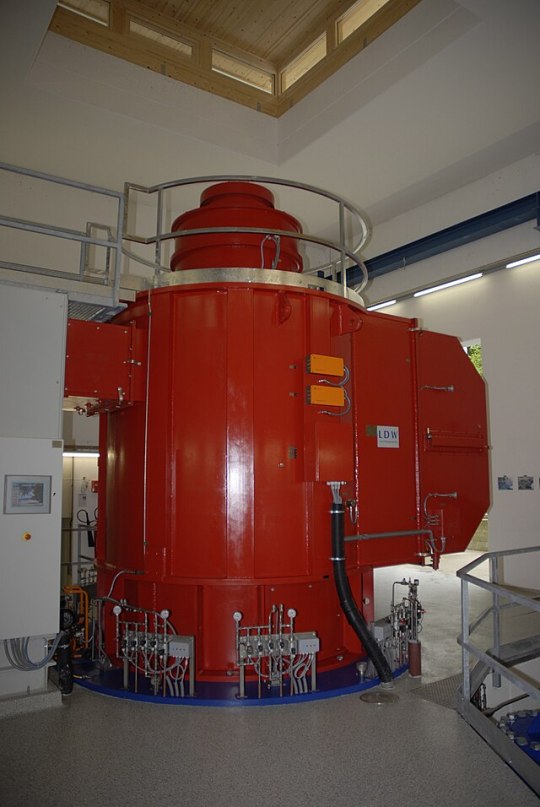
Throughout its operational life, the Antonov An-225 has set numerous world records. In 2001, it carried the heaviest single cargo item ever transported by air—a 189-ton generator for a power plant. In another instance, it transported a 130-ton piece of machinery from Germany to Kazakhstan, marking the largest payload ever carried by an aircraft.
The An-225 has also been used in humanitarian missions, delivering supplies to disaster-stricken areas around the world. Its ability to transport large quantities of aid quickly and efficiently has made it an invaluable resource in times of crisis.
The Legacy of the Antonov An-225
The Antonov An-225 is not just a marvel of engineering; it's a symbol of what human ingenuity can achieve. Despite being over three decades old, this airline airplane model remains unmatched in terms of size and lifting capacity. Its continued operation is a testament to the foresight of its designers and the enduring need for such a massive aircraft in today’s world.
However, the An-225's future is uncertain. The only existing model has been in and out of service due to the high costs of operation and maintenance. There's also been speculation about building a second An-225, but financial and logistical challenges have stalled those plans.
Despite these uncertainties, the Antonov An-225’s legacy is secure. It continues to capture the imagination of aviation enthusiasts and the general public alike, reminding us of the heights—both literal and figurative—that human technology can reach.
In conclusion, the Antonov An-225 is not just the biggest airplane in the world; it’s a symbol of human achievement. From its origins as a Soviet space transporter to its current role in global cargo transportation, this large airplane model has set records and exceeded expectations. Whether or not it continues to fly for years to come, the An-225 will always be remembered as a giant among giants in the world of aviation.
40 notes
·
View notes
Text
Intuitive Machines, the venture-backed startup that went public last year, will send a moon lander to the lunar south pole in 2027 as part of a $116.9 million contract awarded by NASA on Thursday. This is NASA’s tenth award under its Commercial Lunar Payload Services (CLPS) program; of these, four have gone to Intuitive Machines. The company will deliver six NASA payloads to the moon as part of the deal, though there will be additional payload capacity on the lander for commercial customers.
Continue Reading.
31 notes
·
View notes